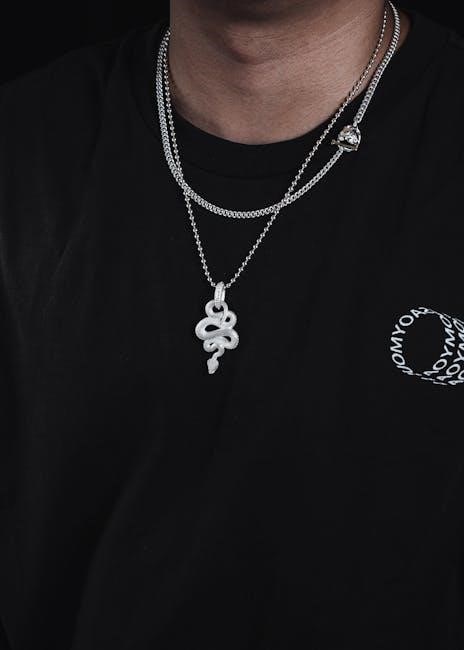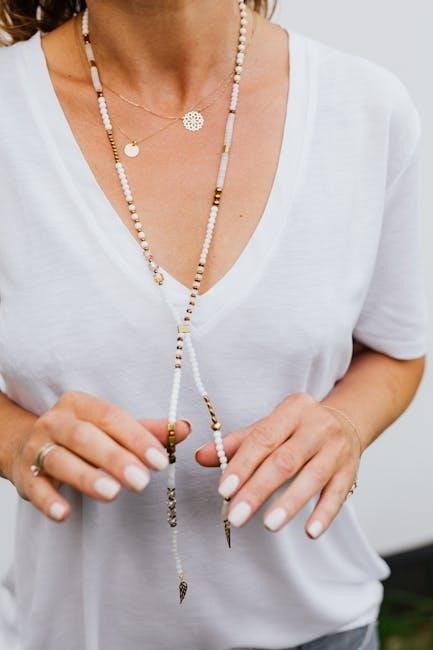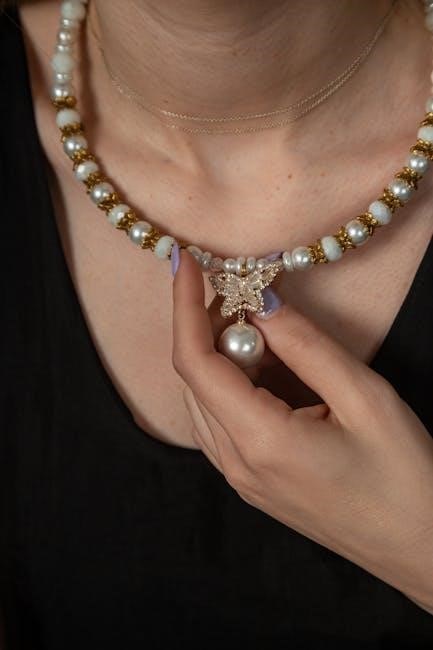freestyle lite meter manual
The FreeStyle Lite Meter is a user-friendly, compact blood glucose monitoring system designed to help individuals with diabetes manage their condition effectively and discreetly.
1.1 Overview of the Freestyle Lite Meter
The FreeStyle Lite Meter is a compact and user-friendly blood glucose monitoring system designed for individuals with diabetes. It offers a sleek, discreet design and is easy to use, making it ideal for daily glucose tracking. The meter requires no coding, simplifying the testing process, and uses a small blood sample size of just 0.3 microliters, reducing discomfort during testing. It provides accurate results in 5 seconds and supports testing from multiple sites, such as the forearm, thigh, or palm, for added convenience. The meter is compatible exclusively with FreeStyle Lite test strips, ensuring reliable and precise readings. Its portability and ease of use make it a practical choice for managing diabetes effectively.
1.2 Importance of Proper Use
Proper use of the FreeStyle Lite Meter is crucial for obtaining accurate blood glucose readings and ensuring effective diabetes management. Following the manufacturer’s guidelines helps prevent errors and ensures the meter functions correctly. Incorrect techniques, such as using expired or damaged test strips, can lead to inaccurate results, potentially affecting treatment decisions. Regular calibration and maintenance, like cleaning the meter, are essential to maintain its performance. Additionally, using the meter correctly reduces the risk of infections and ensures hygiene standards are met. By adhering to the provided instructions, users can rely on the FreeStyle Lite Meter to deliver precise and trustworthy results, which are vital for managing blood sugar levels and maintaining overall health.

Key Features
The FreeStyle Lite Meter offers a user-friendly design, portability, and ease of use, making it ideal for daily blood glucose monitoring. Its compact size ensures convenience for on-the-go testing.
- No coding required simplifies the testing process.
- Small blood sample size minimizes discomfort.
- Fast results provide quick glucose readings.
- Multiple testing sites offer flexibility in sample collection.
2.1 No Coding Required
The FreeStyle Lite Meter eliminates the need for manual coding, simplifying the blood glucose testing process. This feature removes an extra step, making testing quicker and reducing the chance of errors. By avoiding coding, users can focus solely on obtaining accurate results. The meter is designed to automatically recognize the test strips, ensuring a seamless experience. This convenience is particularly beneficial for individuals who perform frequent glucose monitoring. The absence of coding also minimizes the learning curve, making the device more accessible to new users. Overall, the no-coding requirement enhances the efficiency and ease of use of the FreeStyle Lite Meter.
- Eliminates manual coding step.
- Reduces potential for errors.
- Streamlines the testing process.
- Increases user convenience.
2.2 Small Blood Sample Size
The FreeStyle Lite Meter requires only a small blood sample of 0.3 microliters, making it one of the most convenient and pain-free glucose monitoring systems available. This minimal sample size reduces discomfort, especially for those who perform frequent blood glucose tests. The meter’s advanced technology ensures accurate results even with such a small amount of blood, providing reliable readings in just a few seconds. Additionally, the small sample size allows for testing from alternative sites, such as the palm, forearm, or thigh, further enhancing user comfort. This feature is particularly beneficial for individuals with sensitive skin or those who find traditional finger-prick methods uncomfortable. The FreeStyle Lite Meter’s ability to deliver precise results with minimal blood makes it an ideal choice for daily glucose monitoring.
- Requires only 0.3 microliters of blood.
- Reduces discomfort during testing.
- Allows for alternative site testing.
- Ensures accurate and fast results.
2.3 Fast Results
The FreeStyle Lite Meter delivers blood glucose results in just 5 seconds, making it one of the fastest meters available. This quick response time ensures that users can make timely decisions about their glucose levels without delay. The meter’s advanced technology provides accurate readings, even with its rapid testing capability. This feature is particularly useful for individuals with busy lifestyles who need reliable and swift glucose monitoring. The fast results, combined with the meter’s ease of use, make it an excellent choice for managing diabetes effectively.
- Provides results in just 5 seconds.
- Ensures timely decision-making.
- Delivers accurate and reliable readings.
- Ideal for individuals with active lifestyles.
2.4 Multiple Testing Sites
The FreeStyle Lite Meter offers the flexibility of testing blood glucose from multiple sites, including the forearm, upper arm, hand, thigh, calf, and other areas. This feature reduces discomfort by allowing users to rotate testing sites, preventing soreness or irritation from repeated use in one area. The ability to test from alternative sites is especially beneficial for individuals who prefer less painful or more convenient testing locations. By providing options beyond the fingertip, the FreeStyle Lite Meter enhances user comfort and makes glucose monitoring more adaptable to individual preferences. This versatility is a key advantage for those managing diabetes.
- Supports testing from forearm, upper arm, hand, thigh, calf, and more.
- Reduces discomfort by allowing site rotation.
- Provides convenient alternatives to fingertip testing.
- Enhances overall user comfort and flexibility.

Setup and Initialization
This section guides through unboxing, inventory check, battery installation, and initial setup to ensure the meter is ready for first use.
- Unboxing and verifying all components.
- Installing the battery correctly.
- Completing initial setup for accurate functionality.
3.1 Unboxing and Inventory of Components
When you unbox your FreeStyle Lite Meter, ensure all components are included and undamaged. The package typically contains the meter itself, a lancing device, test strips, a carrying case, and a quick-start guide. Inspect each item carefully to confirm they are in good condition and fully functional. The meter should be ready for initial setup immediately after unboxing, with no additional parts required beyond what is provided. Familiarize yourself with each component to ensure proper use and maintenance of the device. Proper inventory ensures you have everything needed to begin monitoring your blood glucose effectively. Always refer to the manual if you notice any missing or damaged items.
3.2 Battery Installation
The FreeStyle Lite Meter requires a CR2032 lithium battery for operation. To install the battery, locate the battery compartment on the back of the meter. Open the compartment by sliding it downward. Remove any protective covering from the new battery and insert it into the compartment, ensuring the positive (+) side faces upward. Close the compartment securely. Once installed, turn the meter on to verify it is functioning properly. The battery should last for approximately 1,000 tests under normal use. If the battery icon appears on the screen, replace the battery promptly to avoid interruptions. Always use the correct type of battery to maintain optimal performance. Refer to the manual for additional guidance or contact support if issues arise.
3.3 Initial Setup and Syncing
After installing the battery, the FreeStyle Lite Meter will automatically turn on and display the system check screen; Ensure the screen matches the example in the manual. Use the navigation buttons to scroll through the date and time settings, adjusting them as needed. It is crucial to set the correct date and time for accurate test result records. Once the initial setup is complete, the meter is ready for use. For syncing with Abbott apps or other devices, refer to the app’s instructions for pairing. Proper syncing ensures seamless data management and comprehensive tracking of your glucose levels. Always follow the manual guidelines for initial setup to avoid any operational issues. This process is essential for optimal performance and accurate monitoring.

Performing a Blood Glucose Test
To perform a test, prepare the meter, insert a test strip, and apply a small blood sample to the edge of the strip. The meter will display your glucose level in just five seconds. Always follow proper testing techniques for accurate results.
4.1 Preparing for the Test
Before performing a blood glucose test, ensure your hands are clean and dry to avoid contamination. Gather the FreeStyle Lite Meter, a test strip, and a lancing device. Wash your hands with soap and warm water, then dry them thoroughly. Select a testing site, such as your fingertip or forearm, and prepare it by wiping it with an alcohol swab if necessary. Allow the area to air dry to prevent diluting the blood sample. Insert a test strip into the meter, ensuring it clicks into place securely. Turn on the meter and wait for it to display the “Ready” symbol. This ensures the device is functioning correctly and ready to provide accurate results. Always use FreeStyle Lite Test Strips to maintain accuracy and compatibility with the meter.
4.2 Applying the Blood Sample
To apply the blood sample, gently squeeze your fingertip to form a small blood drop. Carefully touch the drop to the edge of the test strip, ensuring it makes contact with the sample area. The meter will beep once the sample is detected, indicating it has started processing. Avoid adding more blood after the initial application, as this could cause inaccuracies. If the sample is insufficient, the meter will prompt you to retest. Always use a new test strip for each test to ensure reliability and prevent contamination. The FreeStyle Lite Meter is designed to work with FreeStyle Lite Test Strips exclusively, so using other strips may lead to incorrect results. Once the sample is applied correctly, the meter will quickly analyze the blood glucose level and display the result on the screen within 5 seconds.
4.3 Reading and Interpreting Results
Once the blood sample is applied correctly, the FreeStyle Lite Meter will analyze the sample and display the blood glucose result on the screen within 5 seconds. The result will be shown in numerical format, making it easy to read and interpret. The meter also includes visual and auditory cues, such as a beep, to indicate successful measurement. If the reading is outside the target range, the meter may alert you with a high or low glucose warning. Always refer to your healthcare provider’s guidelines to understand what your readings mean and how to respond. For tracking purposes, the meter stores recent results, allowing you to monitor trends over time. Use this data to adjust your diabetes management plan as needed.
- The meter will beep once the result is ready.
- High or low glucose alerts are displayed if enabled.
- Results are stored in memory for later review.

Maintenance and Care
Regularly clean the meter with a soft cloth and mild detergent to ensure accuracy. Replace the battery every 1,000 tests or when low-battery alerts appear. Properly store the meter in a dry, cool place away from direct sunlight to maintain performance and longevity.
5.1 Cleaning the Meter
Regular cleaning of the FreeStyle Lite Meter is essential to maintain its accuracy and longevity. Use a soft, dry cloth to wipe the exterior, ensuring no moisture enters the device. For more thorough cleaning, dampen the cloth with mild soap solution, but avoid harsh chemicals or excessive liquid. Gently wipe the meter’s surface, paying attention to areas around the test strip port and display. Never submerge the meter in water or expose it to heavy cleaning agents, as this may damage internal components. After cleaning, allow the meter to air-dry completely before use. Proper maintenance ensures reliable performance and accurate blood glucose readings. Always refer to the manual for detailed cleaning instructions and safety precautions.
5.2 Replacing the Battery
The FreeStyle Lite Meter uses a lithium battery (CR2032) that may need replacement when the battery icon appears on the display. To replace the battery, turn off the meter and locate the battery compartment on the back. Use a screwdriver to remove the screw and gently open the compartment. Carefully remove the old battery and dispose of it properly. Insert the new battery, ensuring the “+” sign is facing upward. Close the compartment, secure it with the screw, and turn the meter on. The meter will automatically check the battery and display the battery icon if it is functioning correctly. Always use the recommended battery type to ensure optimal performance and avoid damage to the device. Follow proper safety precautions when handling batteries to prevent injury or meter malfunction.
5.3 Storage and Handling
To maintain the performance and longevity of the FreeStyle Lite Meter, proper storage and handling are essential. Store the meter in a cool, dry place, away from direct sunlight and moisture. Avoid exposing it to extreme temperatures, such as those below 32°F (0°C) or above 122°F (50°C). Keep the meter out of reach of children and pets to prevent accidental damage. When not in use, ensure the meter is turned off to conserve battery life. Clean the meter regularly with a soft cloth and mild cleaning solution to remove dirt or residue. Avoid using harsh chemicals or abrasive materials that could damage the screen or casing. Always handle the meter with care to prevent drops or impacts, as this could affect its accuracy. Store test strips in their original vial, tightly sealed, and at room temperature to ensure reliable results.

Troubleshooting
This section addresses common issues with the FreeStyle Lite Meter, such as error messages, inaccurate readings, and operational problems, providing solutions to ensure optimal performance.

6.1 Common Error Messages
The FreeStyle Lite Meter may display error messages to indicate issues during testing. Common errors include “E-1”, “LO” (low blood glucose), and “HI” (high blood glucose). These messages alert users to potential problems with the test strip, sample size, or meter functionality. For example, “E-1” may indicate a faulty or expired test strip, while “LO” or “HI” suggest blood glucose levels outside the meter’s measurable range. Additional errors like “Strip Not Found” or “Invalid Strip” may occur if the strip is damaged, not properly inserted, or incompatible with the meter. Always refer to the manual or contact Abbott Support for troubleshooting guidance. Proper resolution ensures accurate results and optimal device performance.
6.2 Resolving Common Issues
Common issues with the FreeStyle Lite Meter can often be resolved with simple troubleshooting steps. If an error message appears, such as “E-1” or “LO”/”HI”, ensure the test strip is Abbott-approved and properly inserted. For “LO” or “HI” results, retest with a new strip and follow the manual’s instructions. If the meter is dirty, gently clean it with a soft cloth and avoid moisture. Always use the correct battery type and check expiration dates on test strips. If issues persist, consult the user manual or contact Abbott Support for assistance. Regular maintenance and adherence to guidelines help ensure accurate and reliable performance.
6.3 When to Contact Support
Contact Abbott Support if you encounter issues that cannot be resolved through basic troubleshooting. For example, if the meter consistently displays error messages like “E-1” despite using Abbott-approved test strips, or if the device fails to turn on. Additionally, reach out if the display is damaged, or if you suspect a hardware malfunction. If synchronization issues with Abbott apps or data management persist, support should be contacted. For severe or recurring problems, such as inaccurate readings or failure to recognize test strips, professional assistance is recommended. Always consult the user manual first, but if unresolved, contacting Abbott Support ensures proper resolution and maintenance of your FreeStyle Lite Meter’s performance.

Advanced Features
The FreeStyle Lite Meter offers advanced features like data management, integration with Abbott apps, and customization options, enhancing user experience and glucose monitoring efficiency.
7.1 Data Management

The FreeStyle Lite Meter offers robust data management capabilities, enabling users to track and analyze their blood glucose levels effectively. The meter can store up to 400 test results, allowing for comprehensive monitoring of glucose trends over time. Users can easily review their data on the device, with options to view average readings and detect patterns. The meter also supports customizable reminders, helping users stay consistent with their testing routine. Additionally, the FreeStyle Lite integrates seamlessly with Abbott’s diabetes management apps, enabling users to transfer data wirelessly and gain deeper insights into their glucose levels. This feature-rich system empowers individuals to make informed decisions about their diabetes care.
7.2 Integration with Abbott Apps
The FreeStyle Lite Meter seamlessly integrates with Abbott’s diabetes management apps, offering a comprehensive digital solution for glucose tracking. Using wireless connectivity, the meter syncs with apps like FreeStyle LibreLink and FreeStyle LiteLink, allowing users to monitor their glucose levels on their smartphones. These apps provide detailed graphs, trend analysis, and personalized insights, helping users identify patterns and make informed decisions. Additionally, the apps enable users to set reminders, log meals, and track physical activity, all of which contribute to better diabetes management. This integration enhances the overall user experience, making it easier to manage glucose levels on the go and share data with healthcare providers.
7.3 Customization Options
The FreeStyle Lite Meter offers several customization options to enhance user experience and tailor the device to individual preferences. Users can set alarms for reminders to test their glucose levels, creating a personalized testing schedule. The meter also allows for adjusting the brightness of the display, ensuring readability in various lighting conditions. Additionally, users can customize the units of measurement for glucose levels, choosing between mmol/L or mg/dL. These customization features empower users to manage their diabetes more effectively by adapting the meter to their unique needs and lifestyle. This level of personalization ensures a more convenient and intuitive glucose monitoring experience.

Compatibility
The FreeStyle Lite Meter is designed to work exclusively with FreeStyle Lite Test Strips for accurate results. It is also compatible with other Abbott diabetes management products.
8.1 Compatible Test Strips
The FreeStyle Lite Meter is specifically designed to be used with FreeStyle Lite Test Strips. These strips are optimized for the meter’s technology, ensuring accurate and reliable blood glucose readings. Using any other test strips with the FreeStyle Lite Meter can lead to inaccurate results or device malfunctions. The FreeStyle Lite Test Strips are known for their small sample size requirement of 0.3 microliters, which minimizes discomfort during testing. They are also designed to work with the meter’s advanced features, such as rapid results and alternative site testing. Always ensure you have a sufficient supply of FreeStyle Lite Test Strips to maintain consistent monitoring of your blood glucose levels.
8.2 Integration with Other Abbott Products
The FreeStyle Lite Meter seamlessly integrates with other Abbott products, enhancing your diabetes management experience. It works perfectly with Abbott’s FreeStyle LibreLink app, allowing users to sync their blood glucose data directly to their smartphones. This integration enables easy tracking and sharing of results with healthcare providers. Additionally, the meter is compatible with other Abbott glucose monitoring systems, ensuring a comprehensive approach to diabetes care. The integration promotes a connected ecosystem, making it easier to manage your condition effectively. This compatibility ensures that all your health data is centralized, providing a holistic view of your glucose levels and trends over time.






























